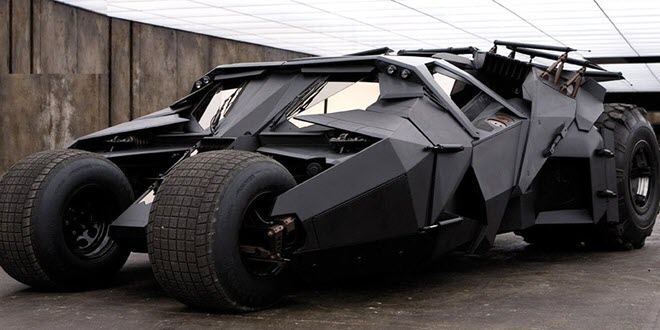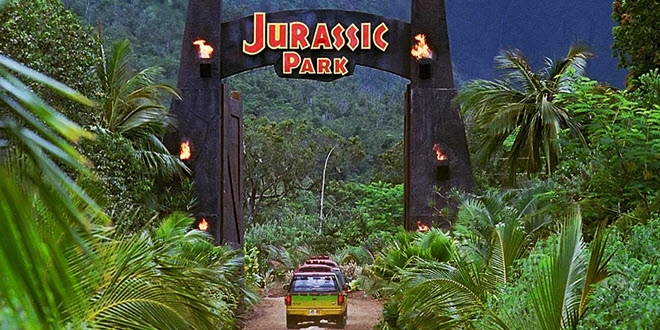From Jurassic Park to S.H.I.E.L.D. – which fantasy businesses in Hollywood Movies use the most energy?How much it would cost to run Jurassic Park or the Death Star
The magic of cinema gives us the chance to escape from reality and see some truly spectacular scenes. From intergalactic battles to high-octane races through the streets of New York, anything is possible on the big screen.
But we often like to take a look at fictional worlds and debate just how unrealistic they are and if we could achieve some of the incredible things we’re shown. Whether it’s intergalactic spaceships or giant robots, what would they be like in the real world?
To dig a little deeper, Business Electricity Prices has taken a look at some of the most famous businesses in Hollywood movies and analysed how much power it would take for them to operate.
To make sure we don’t get too lost in the numbers, we’ll be converting the energy usage into kWh — a unit of measurement that is equivalent to using one thousand watts for one hour. Using up-to-date business energy rates of 13.24p per kWh for large businesses, we can find out exactly how much these fictional companies are spending on their energy bills.
Disclaimer: In these scenarios, we’ve calculated how much these fictional businesses would spend on their energy bills if they were plugged into the mains like any other business.
1. Wayne Enterprises – The Dark Knight
The Batmobile
Billionaire playboy Bruce Wayne isn’t someone who tends to do what he’s told, so if he wants to hide behind a cowl and fight crime in his downtime, he’s going to. However, he’d better put some of his fortune towards paying his electricity bill — those gadgets don’t run on air.
The Batmobile is definitely Batman’s most famous toy. And while there have been several iterations of Bruce Wayne’s signature ride over the years, we’re focusing on the Nolan-era version from the 2008 blockbuster The Dark Knight. More tank than car, the ‘tumbler’ Batmobile is a moving fortress with protective armour plating and armed to the teeth.
The most impressive aspect, however, is the engine. This monster is described as “more powerful than turbine jet engines” and is capable of reaching up to 10,000 horsepower — more than six times more powerful than a Bugatti Chiron!
Total energy: 7547 kWh
Total cost per hour: £999.28
2. InGen – Jurassic Park
Jurassic Park
Located off the west coast of Costa Rica, Jurassic Park is the brain-child of John Hammond and the InGen Corporation. On the island of Isla Nublar, extinct dinosaurs roam freely in their enclosures, ready to amaze tourists from around the world.

Image credit: Universal Pictures
Keeping a theme park of any description up and running with power is a costly endeavour, but add dinosaurs to the equation and things get a little more complicated. To ensure the safety of the visitors, the entire island is surrounded by a 50-80 mile electric fence. However, not all dinos are friendly, meaning that some of the more vicious attractions need their own electrified enclosures.
There’s also the breeding programme to think about. Retrieving prehistoric dinosaur blood from mosquitoes trapped in amber isn’t cheap, and neither is powering the laboratory equipment to freeze embryos and incubate eggs.
Even if we put the overgrown lizards to one side for a moment, there are a number of practical issues that also need to be accounted for. Whether it’s accommodation in the visitor’s centre, 24-hour CCTV throughout the island or transport across the rough terrain, a lot of energy gets pumped into Jurassic Park. How much it would cost to run Jurassic Park or the Death Star?
In fact, E.ON Energy has crunched the numbers and discovered that by their estimations, a Jurassic Park-style Island would use an astonishing 445,145,419 kWh annually.
Total energy: 50,815 kWh
Total cost per hour: £6,727.91
3. Weyland-Yutani Corporation – Alien
USCSS Nostromo

Image Credit: 20th Century Fox
Originally designed as an interstellar cruiser, the USCSS Nostromo was refitted by the Weyland-Yutani Corporation as a commercial hauler between Thedus, an outer rim planet, and Earth.
The Nostromo hauls a mile-long refinery which can process at least 20 million tons of raw oil in transit. In order for the ship to move such heavy cargo, its original engines were replaced with two immensely powerful Rolls-Royce N66 Cyclone engines, generating a total of 131,660 kN of thrust when running at full power.
To put that into perspective, a Boeing 747 produces 1008 kN of thrust from its four engines, which takes 7.03 GJ of power.
For the USCSS Nostromo to travel, it would take an impressive 918.22 GJ of power or 255,000 kWh. This gives it more power than 130 Boeing 747s!
Total energy: 255,000 kWh
Total cost per hour: £33,762
4. Pan Pacific Defence Corps – Pacific Rim
Gipsy Danger

Image credit: Warner Bros. Pictures
When gigantic interdimensional monsters are rising from the sea and attacking major cities, humanity needs to come together to defend themselves against the common threat. But with portals opening up across the globe, the planet wouldn’t survive the barrage of atomic bombs.
Instead, the world’s top minds came together to come up with a creative solution: build 300-foot mechs to fight the invaders. Named Jaegers, these colossal weapons called for the collective resources of every nation to build and maintain, and as you can guess, they take a lot of energy to run.
As the more modern Jaegers run on “digital energy”, we’re focusing on Gipsy Danger, the protagonist mech and one of the oldest models. As a Mark-3 Jaeger, this behemoth gets its power from an onboard nuclear reactor, powering the mech’s movement, weaponry and life support.
In a global crisis, it’s only natural that we’d pull together all our resources when creating the Jaegers; so to get an idea of how much power is produced by Gipsy Danger, we’ll use the world’s most powerful nuclear power station as a reference. The Tokyo Electric Power Company (TEPCO) nuclear power station produces the most energy at 7,965 mW – and as most reactors are only 4 meters tall, there would be no trouble fitting it inside a gigantic mech.
Although the Jagers are likely to have more advanced power cores to match their futuristic weaponry, at nearly 8000mW (8 million kWh), it still packs a punch.
Total energy: 8 million kWh
Total cost per hour: £1,059,200
5. The Machines – The Matrix
Human batteries

Image credit: Warner Bros. Pictures
Okay, so TECHNICALLY this isn’t a business, but for argument’s sake we’re going to treat the race of highly advanced machines with artificial intelligence as if they’re a company. After all, businesses aren’t really a thing in The Matrix.
In a world where we’re ruled by robots who have obtained artificial intelligence, things aren’t looking good for humanity. Blocking the machines’ access to solar power may have seemed like a good idea for humanity at the time, but the wily bots simply came up with a creative solution.
Robots obviously need a power source, so with the sun off-limits, they created pods to harvest the energy created from human bodies. With the entire race enslaved and a digital matrix to keep everyone busy, the artificial beings have created themselves a seemingly endless power source — but exactly how much energy are they generating?
The average energy burned by an adult in a day is 2500 for men and 2000 for women. That equates to 120W and 97W respectively. If we take an average of 97W, this gives us an idea of how much energy each body is producing daily. The Matrix is set in 2199 and it’s referenced that at this time there are 6.5 billion ‘human batteries’ occupying the pods. This means that roughly 698,750 mW of energy is being produced every single day
Total energy: 29,114,583 kWh
Total cost per hour: £3,854,770.79
6. S.H.I.E.L.D. – MCU
The Helicarrier

Image credit: Walt Disney Studios
As law enforcement, espionage and counter-terrorism specialists, S.H.I.E.L.D. have protected the earth from threats, both human and alien, from the shadows for years. Under the directorship of Nick Fury, S.H.I.E.L.D. not only formed The Avengers but have developed some of the most powerful and extraordinary technology the earth has ever seen.
Let’s take the Helicarrier for example, as rotors powerful enough to allow an Aircraft carrier to fly must take some serious juice. Wired published an in-depth study into the physics behind the Helicarrier and what it would take to get it airborne. Using this data, we can see just how much power S.H.I.E.L.D. needs to pump into their flying fortress.
The Helicarrier is roughly based on a Nimitz Class Carrier, with a length of 333 meters and a mass of over 97,000 tons. This gives us a rough estimate of the size of the rotas, which adds up to a total rota area of 4000m2.
Using these statistics, Wired did the math and discovered that it would take a whopping 317 gigawatts of power just to make the Helicarrier float!
It’s no wonder Nick Fury was interested in the Tesseract’s unlimited energy potential.
Total energy: 317 million kWh
Total cost per hour: £41,970,800
7. The Galactic Empire – Star Wars
The Death Star

Image credit: 20th Century Fox
As the Emperor of a galactic empire, Palpatine is too busy destroying rebel scum to worry about how much he’s spending on his utility bills. That said, creating a space station the size of a moon to annihilate planets in seconds was never going to be cheap.
The Death Star’s main weapon is powered by eight ‘kyber crystals’ which work together to form the superlaser, giving it the stopping power to turn worlds to dust.
To figure out how much energy such a terrifying weapon uses, we’ve had to use some physics. If, for example, Earth was the next target of the superlaser, the minimum amount of energy needed to completely destroy it is the same as the planets gravitational binding energy – an incredible 2.24 × 10^32 Joules.
To give that statistic a little more emphasis, it would take a week’s worth of the Sun’s total energy output to mimic the devastation of the Death Star’s superlaser.
If we want to be even more specific, that equates to 6.2830687831e+11 Watts (whatever that means). As it took roughly 3 seconds to destroy Alderaan, that adds up to a mind-boggling 1,884,920,634,930 watts…
Total energy per laser beam: Nearly 2 trillion watts
Total cost per laser beam: £249,563,492.07*
*If you wanted to destroy your enemies for a solid hour, it would set you back a mere £299 billion – the equivalent of funding the UK’s military for nearly 7 years.
Final thoughts
Unsurprisingly, it seems that we’re still nowhere near capable of the incredible things in Hollywood films. However, it’s interesting to see the science behind some of the most memorable scenes in movie history.
Whether your business focuses on battling interdimensional aliens, harvesting humans or destroying planets, it’s crucial to make sure you’re keeping your energy costs to a minimum. Get a free quote at Business Electricity Prices to see how much you can save, then you can get back to powering your dinosaur-based theme park.
Download as PDF Which fantasy businesses in Hollywood Movies use the most energy_ or See Info graphic below

 Epic Heroes Entertainment Movies Toys TV Video Games News Art Pop culture news goodness
Epic Heroes Entertainment Movies Toys TV Video Games News Art Pop culture news goodness





